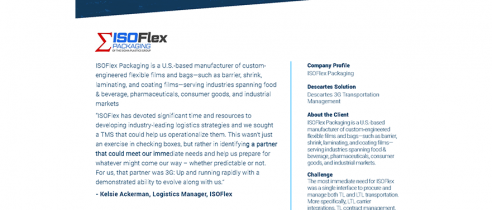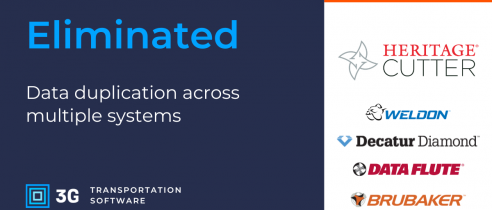Blog
How the Right Transportation Management Software Can Reduce Labor Costs

As digital transformation continues to accelerate customer expectations for shipping speeds, inefficient, manual transportation management can be devastating to productivity. On top of slowing down processes, operations that rely on spreadsheets and cumbersome management methods quickly rack up unnecessary costs from inefficiency, especially when it comes to labor. That’s why transportation and shipping software is so important: it can provide frontline workers with the tools they need to work more efficiently, streamline operations, help optimize routes, automate processes, and even help small, medium-sized, and large operations function at the same level.
The right transportation and shipping software doesn’t just streamline operations and reduce different types of transport costs — it can generate significant savings on labor expenses at a time when profit margins need extra protection. Here’s what you need to know about reducing labor expenses and transportation costs with the right software.
How Transportation and Shipping Software Reduces Labor Costs
Implementing a transportation and shipping platform is essential for streamlining operations and reducing transportation costs amid record-setting inflation. However, making processes more efficient through digitalization doesn’t just make life easier for employees — each of these benefits plays a direct role in reducing labor costs as well:
Streamlined Route Planning and Carrier Consolidations
Manual logistics planning requires employees to painstakingly track variables like delivery schedules, vehicle capacities, and traffic conditions to create the most efficient and cost-effective routes and shipments. With such an overwhelming amount of information to juggle, not only do workers make more mistakes in planning — but the menial work also eats up a lot of labor hours.
Transportation and shipping software automates route planning, scheduling, and carrier consolidation by using algorithms to easily identify opportunities to optimize each delivery. This eliminates much of the most mentally taxing work involved in planning and scheduling, which is especially important for small operations where the workforce may already be overutilized, and saves time in addition to reducing errors. By deploying transportation software, companies can easily scale their shipping volume without straining or expanding labor resources to maximize profit margins. In fact, BarProducts.com was able to reduce their labor expenses by 75%, and even lowered their error rate in the process.
Reduced Administrative Burden
When using spreadsheets and paper-based systems, employees have to manually enter and manage order, shipment, and invoice data — all critical and time-consuming work that can take many labor hours. The time and effort involved in coordinating with carriers and managing compliance documents only exacerbates labor and different types of transport costs — especially as shipping volumes increase.
Transportation and shipping software can automate a lot of the tedious administrative processes involved in these operations, streamlining order entry, shipment tracking, and invoicing, and virtually eliminating manual data entry and paperwork. By automating these tasks, the software not only reduces the risk of errors — it helps employees get more done in less time.
Automated Invoicing, Auditing, and Settlement
A key benefit of transportation and shipping software is that it helps streamline the entire order process, including invoicing, contract management, and other key financial processes, all the way from the initial order to final settlement. Many platforms feature built-in auditing so users can easily track the status of any transaction within a single user interface.
The software can also automatically deliver updates about order status, enhancing customer service metrics. Automating these communication tasks doesn’t just improve customer satisfaction and collaboration — it also frees workers to use their time more efficiently and focus on more value-driven tasks that increase revenue.
Integrations
With manual transportation management processes, employees must painstakingly move or replicate information across the different systems they use for order tracking, route planning, and other critical tasks. Integrations enable users to automatically export or sync data with other systems, reducing the need for manual data entry and the risk of errors, unifying workflows, and even expanding the types of services available to customers. This capability reduces time wasted and improves overall productivity, dramatically reducing labor and transportation costs in the process.
3G: The Right Transportation and Shipping Software for the Job
Controlling labor and transportation costs is critical for shippers to remain competitive in today’s ultra-efficient logistics environment — regardless of the size of their operation. Leading-edge transportation software can be a game-changer for companies that have outgrown spreadsheets and other manual methods of tracking their shipment.
3G offers a full suite of software solutions to help optimize routing, trailer packing, carrier selection, invoicing, and other critical business processes — all crucial to holistically reducing labor and transportation costs. Experience the 3G difference with a free product demo.







